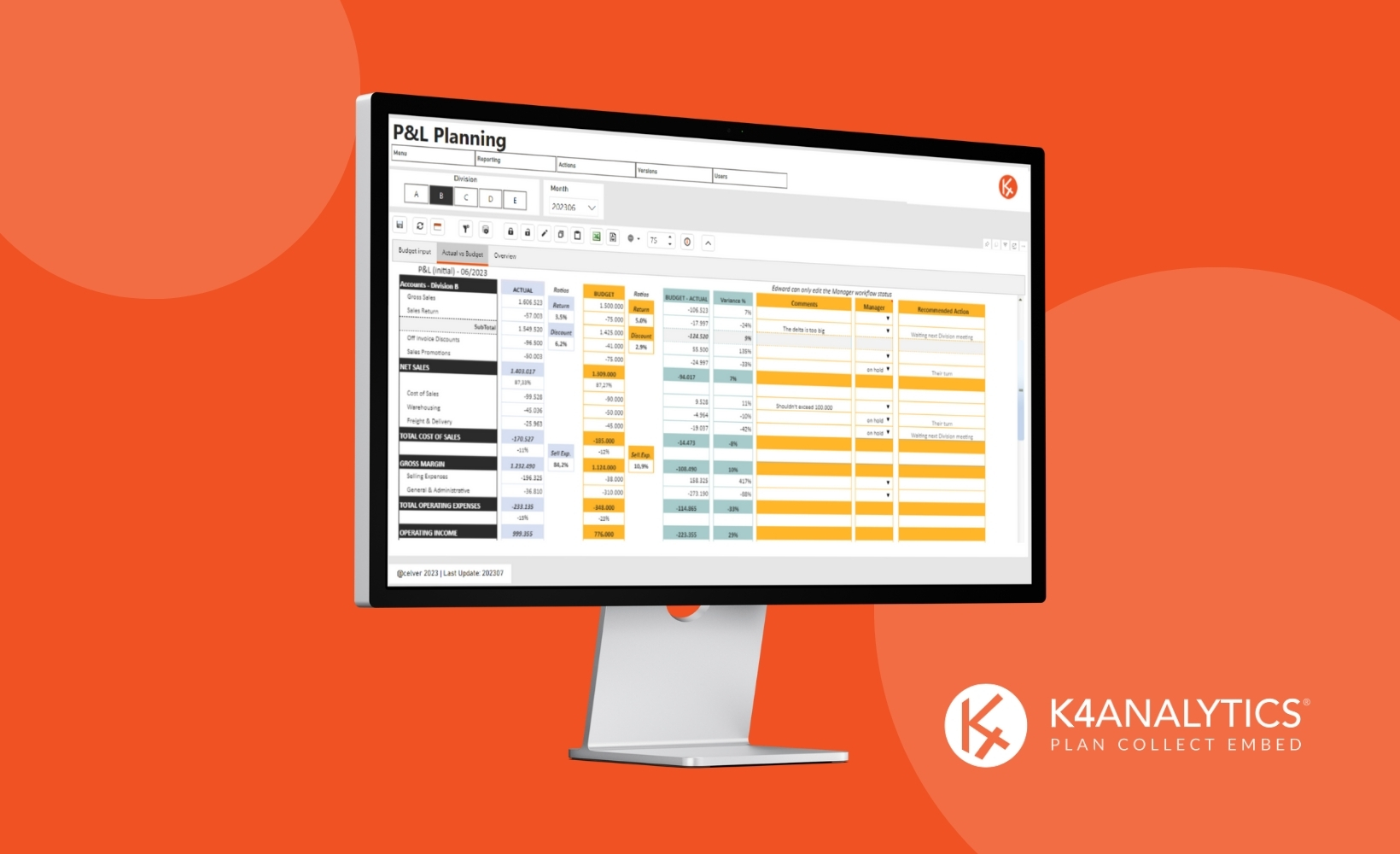Today we talk about one of the main key actors in retailing: the purchasing department. Its main role is to supply products strategically and efficiently to meet demand and maintain profitability.
But their job doesn’t end there. In this article we explore how behavioral analysis and purchasing reporting can help improve a retail company’s results.
The role of the purchasing department and its importance.
Some of the key operations in the retail sector fall directly on the purchasing team. These include: inventory management to ensure that demand is met, control of acquisition costs by negotiating with suppliers, and many other responsibilities that have a major impact on the company’s profitability.
And although the purchasing activity has traditionally been recognized to the extent that it was able to reduce costs, with the increase in competitiveness and the availability of new technologies, its function now has much more value and importance within the company, moving from a more tactical and short-term operation to a more strategic and long-term one.
Today we clearly understand that purchasing is much more than just obtaining quality goods at a good price, and that it is an activity whose operation has a strong impact on overall results.
The strong relationship between purchasing and sales.
As the purchasing department grows in relevance, it is important to take care of how it relates to other areas.
For example, the purchasing function can support the strengthening of the company’s financial health by designing and creating strategies to improve its working capital.
Even more important is its relationship with sales. Accurate and strategic product sourcing that aligns with market needs is one of the keys to success in retail, and that can only be achieved with a strong understanding of sales and customer behavior.
A key factor for efficient collaboration between different areas of the company is having the right technologies in place. In this context we are talking about, a BI solution for sales behavior analysis allows for much more efficient planning and purchasing.
For example, it is becoming increasingly common for climate change to affect sales, because it takes longer than expected for the cold or heat to arrive. If the right tools are in place, purchasing will be able to buy sufficient stock of seasonal clothing according to the weather and customer behavior.
In fact, it is these types of solutions that allow (as we said before), the purchasing function to go beyond its own area of competence and bring more value to the company, collaborating with sales, finance, etc.
How a BI solution can support the purchasing function.
As we said, providing purchasing with an appropriate technological solution makes it easier for this department to unleash its full potential and fulfill its function much more efficiently, for example:
- Incorporating as a variable the logistic cost in the purchase to sell at more competitive prices (buying expendable products with a cheaper transport, such as the ship, while the most important ones can assume other more expensive transports).
- Incorporating the constant analysis of coverage, i.e. weeks of sales covered according to available stock and according to the pace of sales, and all this taking into account the stock in transit.
- Anticipating and efficiently planning for more complex periods such as Christmas.
- Incorporating the management of outlet channels to be able to sell leftovers, poorly made purchases or product not sold as expected in order to correct planning.
- Tracking the budget data on which the company’s purchases have been based (plan vs. reality).
- Etc.
Purchasing reporting and some important metrics.
To fulfill this function, the purchasing department must track a number of metrics, some of the most important being:
- Inventory turnover: a high turnover indicates efficient inventory management and a low probability of unwanted stock accumulation.
- Stock level: accurate tracking of this data is essential to avoid inventory shortages or overstocks.
- Inventory coverage: helps to plan purchasing and inventory management by knowing how many periods such as the one selected for analysis would be covered by stock if the sales rate is maintained.
- Order fulfillment rate: indicates what percentage of orders placed with suppliers were delivered in full and on time. A high fulfillment rate is crucial to avoid delays and stock problems.
- Cost of acquisition: reflects the total cost of acquiring products, including purchase price, shipping and other associated costs. It is important for assessing cost management efficiency.
- Gross profit margin: calculates the difference between the selling price and the acquisition cost of the products. A higher margin indicates higher profitability.
- Out-of-Stock rate: measures the frequency with which products run out of stock before demand can be met. A high rate may indicate an opportunity for improvement in inventory management.
- Supplier lead time: represents the time from the time an order is placed until it is delivered. A reduction in lead time can increase purchasing agility and reduce the risk of shortages.
- Return rate: indicates the proportion of purchased products that are returned due to defects or customer dissatisfaction. A high rate may require a review of supplier or product selection.
- Supplier profitability: evaluates the contribution of each supplier to overall profitability. Identifying suppliers that contribute the most value is essential for purchasing decisions.
These metrics (and many others) provide a complete picture of the performance and efficiency of the purchasing department. By measuring and analyzing them on an ongoing basis in a BI solution, a retail company can optimize its operations and improve its profitability while ensuring customer satisfaction.
At Holistic Data Solutions we help you optimize your purchases.
As we have seen, the ability to make purchasing decisions based on data, sales correlations and logistics costs is critical. The integration of Business Intelligence and strategic planning allows companies to anticipate, plan and adjust their purchases efficiently, ensuring customer satisfaction and long-term profitability.
Integrating and aligning functions across departments, employing and leveraging the right technologies and automating repetitive tasks will help you to manage your capital more effectively and increase your productivity. And we at Holistic Data Solutions can help.
Related Articles
Time and money. If we were to carry out a market survey and ask finance directors, entrepreneurs or heads of [...]
Finance is a vital area for any company. In a context marked by instability and volatility, it is more important [...]
Operational management in the retail sector is complex for many reasons: the number of factors to consider, changes in trends [...]
















